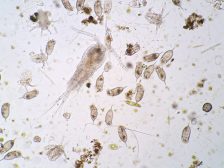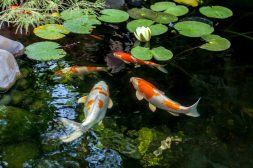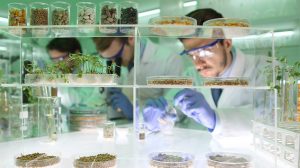Bioaccumulation
– a general term for the accumulation of substances, such as pesticides (ddt is an example), methylmercury, or other organic chemicals in an organism or part of an organism. The accumulation process involves the biological sequestering of substances that enter the organism through respiration, food intake, epidermal (skin) contact with the substance, and/or other means. The sequestering results in the organism having a higher concentration of the substance than the concentration in the organism’s surrounding environment. The level at which a given substance is bioaccumulated depends on the rate of uptake, the mode of uptake (through the gills of a fish, ingested along with food, contact with epidermis (skin), …), how quickly the substance is eliminated from the organism, transformation of the substance by metabolic processes, the lipid (fat) content of the organism, the hydrophobicity of the substance, environmental factors, and other biological and physical factors. As a general rule the more hydrophobic a substance is the more likely it is to bioaccumulate in organisms, such as fish. Another way of saying this is that bIOACCUMULATION of a substance is correlated to the octanol-water partition coefficient (KOW) of the substance. Increasing hydrophobicity (lipophilicity) leads to an increasing propensity to bioaccumulate. Some substances do not conform to this relationship, such as methlymercury. Methlymercury accumulates in fish to a much greater degree than methlymercury’s KOW would indicate.
A related term is bioconcentration. Bioconcentration differs from bIOACCUMULATION because it refers only to the uptake of substances into the organism from water alone. Bioaccumlation is the more general term because it includes all means of uptake into the organism.
source: http://toxics.usgs.gov
Dictionary > BIOACCUMULATION
You will also like...

Freshwater Communities & Plankton
Planktons are microscopic organisms that live suspended in aquatic habitats. There are two groups: the phytoplanktons an..

Freshwater Communities & Lentic Waters
Lentic or still water communities can vary greatly in appearance -- from a small temporary puddle to a large lake. The s..

Animal Water Regulation
Animals adapt to their environment in aspects of anatomy, physiology, and behavior. This tutorial will help you understa..

Soils
Nutrients in the soil are essential to the proper growth of a land plant. This tutorial deals with the properties of soi..

Regulation of Biological Systems
Regulation of Biological Systems tutorials are focused on the modulation of biological systems from cell to population l..

Sugar Homeostasis
The blood sugar level is regulated by two hormones. The mechanism behind this type of negative feedback control is descr..

